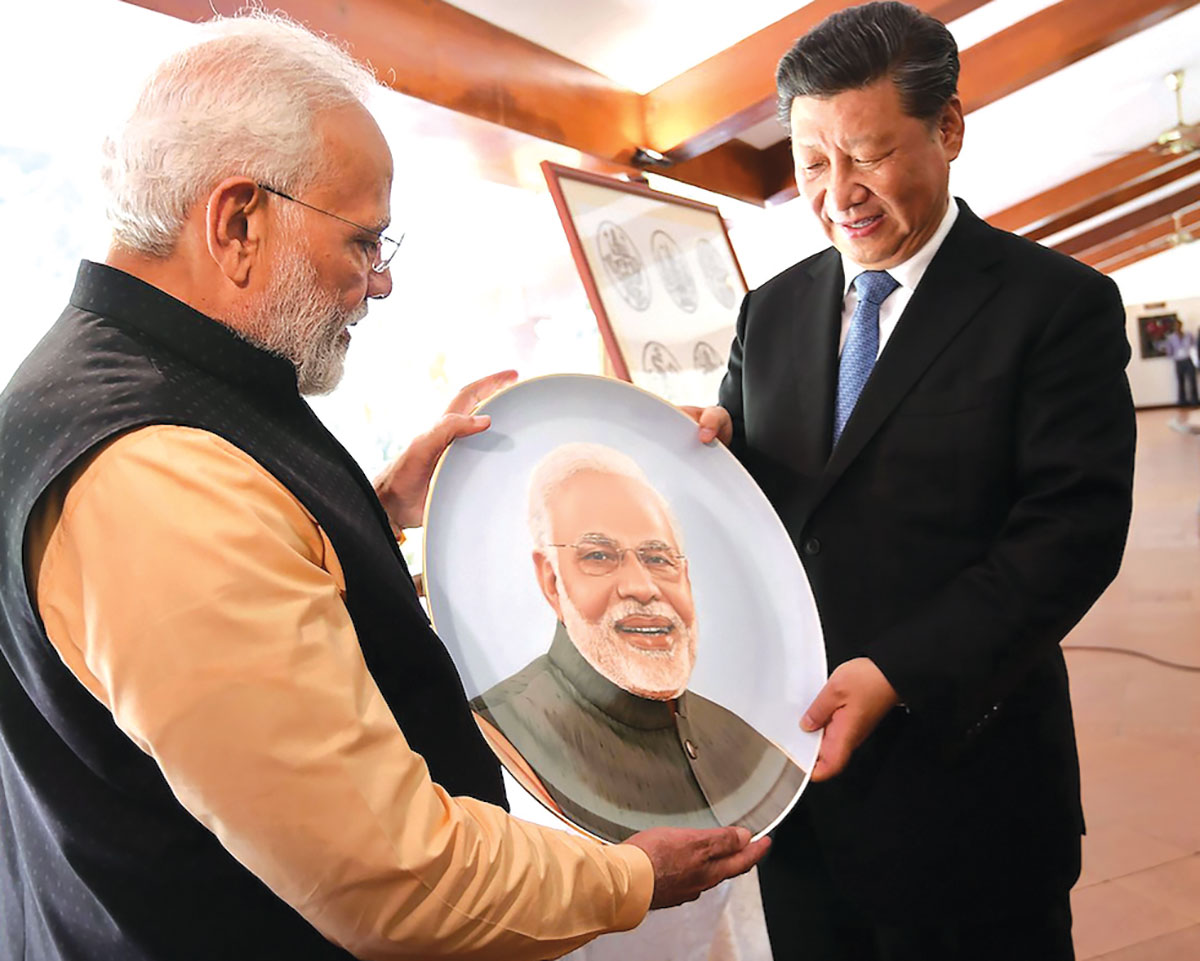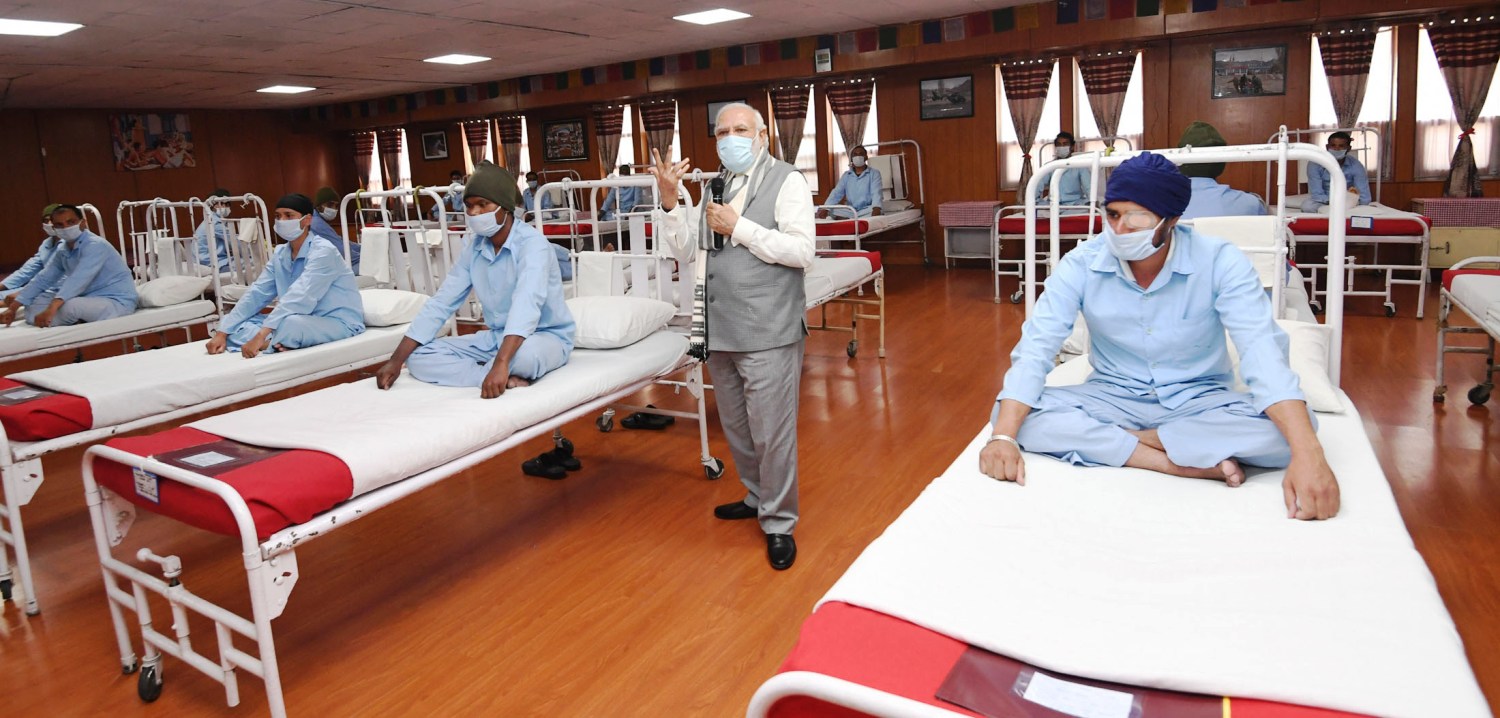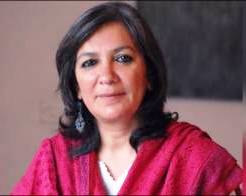by Jyoti Malhotra
Clearly, New Delhi is worried that the neighbourhood, once very much under its spell, could be slipping from its grasp.
The Chinese are not just inside Indian territory, they seem to be closing in and around India as well. From Afghanistan in the north-west to Nepal in the north to Bangladesh in the east, the Chinese are no longer just expanding influence in South Asia, they are close to becoming its pre-eminent power.

Chinese premier handing over a handmade portrait to host Prime Minister Narendra Modi in 2019 during his India visit.
Less than 24 hours ago, India received another jolt to her regional ambitions as Pakistan foreign minister Shah Mehmood Qureshi invited China’s special envoy to Afghanistan, Liu Jian, to Islamabad to help end the 19-year-war in that country. Qureshi is today meeting a Taliban delegation, led by Mullah Abdul Ghani Baradar – who the Pakistanis kept in a jail safe-house for more than eight years before releasing him back to the Taliban in 2018 – to set the stage for the meeting with Liu.
Back in the east, in Bangladesh, the Chinese have been wooing Prime Minister Sheikh Hasina and her powerful army long enough for her to consider an equidistance between Beijing and New Delhi.
A complex mix of airport contracts (the Chinese have just won the tender to build a second terminal in Sylhet, nearby India), defence agreements — which include an ultra-modern submarine base called BNS Sheikh Hasina in Cox’s Bazaar, a new naval base in Patkhauli and the delivery of a Chinese Corvette to strengthen its naval forces — and 97 per cent duty-free access for Bangladeshi goods, have made China not just Bangladesh’s largest trading partner, but also its largest investor.
In Nepal, meanwhile, a report said that China had occupied large tracts of land in seven districts bordering the country – in Dolakha, Gorkha, Darchula, Humla, Sindhupalchowk, Sankhuwasabha and Rasuwa – pushing the Nepali boundary further south. However, Nepal strongly denied these claims and the newspaper apologised for publishing it. Beijing is also pushing Kathmandu to sign a memorandum to seal a 2019 draft agreement allowing both countries to survey and map Mount Everest.
Bangladesh Sends A Message
So even as China digs its heels in Ladakh, reinforcing physical infrastructure and airlifting troops to guard the Line of Actual Control (LAC), Prime Minister Narendra Modi sent Foreign Secretary Harsh Shringla to Bangladesh last week on a special aircraft with messages of peace and friendship.

The Prime Minister, Narendra Modi visits Army hospital, in Ladakh on July 03, 2020. He interacted with the soldiers who were injured in the June 15 clash with the Chinese army in Galwan valley. A PIB Photo
Certainly, there’s something special about Bangladesh. There’s the 1971 blood tie, the fact that Bangladesh nestles into the Bay of Bengal and is the early transition into Southeast Asia. When India looks east, it first espies Bangladesh.
But when Foreign Secretary Shringla’s plane landed, no senior official of any consequence came to receive him, or see him off. In sharp contrast, when a team of 10 Chinese doctors arrived in Dhaka to help Bangladeshis combat the coronavirus in June, foreign minister AK Abdul Momen came to the airport to welcome them.
According to the Bangladeshi media, Hasina kept Shringla waiting for several hours before finally seeing him. No photos were released to the media of their meeting – the only ones that found its way to the newspapers was a photo of Shringla in Dhaka in March. Nor was there a proper briefing to the Bangladeshi media afterwards by Hasina’s office, except for a couple of predictable statements. Shringla came quietly and left quietly.
If this was a diplomatic reprimand by Hasina, the message was loud and clear. Fact is, Shringla is well-liked in Dhaka where he was High Commissioner from 2016-2019. He knows everyone across the political spectrum. It seems the implied rebuke was not personal.
A Break In Ties
One key reason for the missing warmth is the Home minister Amit Shah’s charge in 2018 that illegal immigrants in Assam are like “deemak” or termites who take away the jobs of locals; Shah repeated the charge in West Bengal during the 2019 campaign, adding that if the BJP came to power, it would throw all infiltrators into the Bay of Bengal.
For a Prime Minister whose Awami League party has been joined at the hip with India since 1971, Shah’s remarks were not just a cold shower, they undermined her. They put at risk the affections of a whole political party in power in a subcontinent India likes to call her own.
Hasina had already been tempted by Chinese president Xi Jinping’s $24 billion generosity when he came visiting in 2016. When she visited China in mid-2019, premier Li Keqiang promised to better synergise China’s Belt and Road with Bangladesh’s development strategy. The Sylhet airport came in April this year. Less than a fortnight ago, China agreed to fund a massive project for the management of the Teesta river for nearly $1billion – a river that flows into Bangladesh from north Bengal.
Time is now
Certainly, India hasn’t lost Bangladesh – at least, not yet – notwithstanding all the goodies the Chinese are offering. There are several connectivity projects underway, the most recent being the movement of cargo from Kolkata to Agartala, via Chittagong port.

Jyoti Malhotra
Just like the fact that India hasn’t lost Afghanistan – at least, not yet – despite the fact that Pakistan is very much back in the game, brokering the future with its good friends, the Taliban, with a little help from Big Brother China.
Clearly, New Delhi is worried that the neighbourhood, once very much under its spell, could be slipping from its grasp. The key, of course, lies in PM Modi improving political ties with leaders in the neighbourhood and keeping the atavistic tendencies of his party, the BJP, in check. Will he be able to do it?
(Author is a senior journalist. The article was originally published in The Print and is republished with permission. Views are personal.)
from Kashmir Life https://ift.tt/34zYaPq
via IFTTThttps://kashmirlife.net
No comments:
Post a Comment